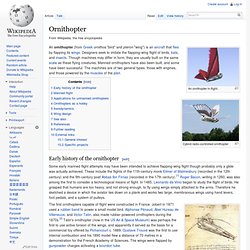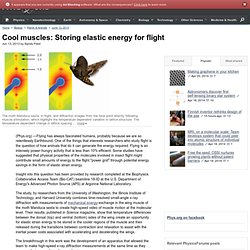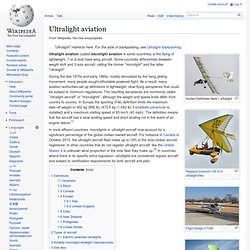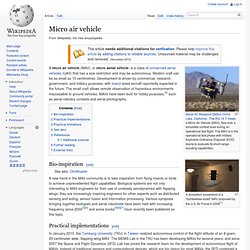

Engineers print a functioning 1.5m-wide prototype unmanned aerial vehicle. (Phys.org) —Engineers at the Advanced Manufacturing Research Centre (AMRC) at the University of Sheffield have successfully printed a 1.5m-wide prototype unmanned aerial vehicle (UAV) for a research project looking at 3D printing of complex designs.

The engineers said the polymer craft could form the basis of cheap and potentially disposable UAVs that could be built and deployed in remote situations potentially within as little as 24 hours. Earlier versions required significant amounts of support material around component parts to prevent the airframe structures from deforming during the build process.
Using support material adds a direct material cost, and significantly increases build time, in some cases by an order of magnitude. This is a result of the machine having to change between build and support structure heads after each printed layer. MIT Daedalus. The MIT Aeronautics and Astronautics Department's Daedalus was a human-powered aircraft[1] that, on 23 April 1988, flew a distance of 71.5 mi (115.11 km) in 3 hours, 54 minutes, from Iraklion on the island of Crete to the island of Santorini.

The flight holds official FAI world records for total distance, straight-line distance, and duration for human-powered aircraft. The craft was named after the mythological inventor of aviation, Daedalus, and was inspired by the Greek myth of Daedalus' escape from Crete using manmade wings. There were actually three aircraft constructed: Light Eagle (originally Michelob Light Eagle): a 42 kg (92 lb) prototype.Daedalus 87: Crashed during testing at Rogers Dry Lake (NASA Dryden Flight Research Center) on 17 February 1988, and was rebuilt as a backup.Daedalus 88: Flew from Crete to just off the beach on Santorini. Solar Impulse plane's trans-America bid continues. The Solar Impulse plane has set a new distance record for solar-powered flight on the second leg of its trans-American journey on Wednesday evening.

The craft landed in Dallas, Texas, after an 18-hour flight from Phoenix, Arizona - a journey of 1,541km (958mi). In the coming weeks, it will also stop over in St Louis, Missouri, and Washington DC before heading to New York in early July. The project aims to showcase the capabilities of renewable energy. Quantum Levitation. GT4 e-hybrid airplane. Volta Volaré has begun taking orders for its four-seater GT4 hybrid private aircraft it calls "the most technologically advanced private aircraft available anywhere on Earth.

" Though the GT4 is perfectly capable of taking off and flying powered only electrically, a gas engine starts when the airplane's battery drops to 25 percent capacity in order to recharge it mid-flight. Surprisingly, perhaps, Volta Volaré makes a strong economic case for the GT4. Ornithopter. An ornithopter in flight.

Cool muscles: Storing elastic energy for flight. (Phys.org) —Flying has always fascinated humans, probably because we are so relentlessly Earthbound.

One of the things that interests researchers who study flight is the question of how animals that do it can generate the energy required. Flying is an intensely power-hungry activity that is less than 10% efficient. Some studies have suggested that physical properties of the molecules involved in insect flight might contribute small amounts of energy to the flight "power grid" through potential energy savings in the form of elastic strain energy. Ultralight aviation. Huntair Pathfinder Mark 1 ultralight K-10 Swift - MKI Quicksilver MXII P and M Aviation Quik GT450 ultralight.

Martin Jetpack. The Martin Jetpack is an experimental aircraft.

Though its tradename uses the phrase "jet pack," the craft uses ducted fans for lift. Martin Aircraft Company of New Zealand developed it, and they unveiled it on July 29, 2008 at the Experimental Aircraft Association's 2008 AirVenture in Oshkosh, Wisconsin, USA. The Federal Aviation Administration classifies it as an experimental ultralight airplane. It uses a gasoline (premium) engine with two ducted fans to provide lift. Its design claims a 60 mile per hour maximum speed, an 8,000 foot flight ceiling, with a flight time about 30 minutes on a full fuel tank.
The jetpack could be available on the market as soon as 2014, and is expected to sell for approximately NZ$150,000,[1] with the initial production model aimed at military and "first responder" emergency crews such as firefighters. History[edit] Your own helicopter for under US$20,000. September 21, 2005 Flying is not a sport generally associated with those people who are light of wallet – which makes the Mosquito Ultralight helicopter something of a rarity.

The entire kit for the Mosquito can be purchased for US$20,000 and if you think the minimalist Mosquito leaves you a bit vulnerable, there’s the fully enclosed Mosquito XE and XEL which can be purchased for US$23,000 apeice. Building the kits will cost you about 200 to 300 hours to build or you can have the plane built for you for a flat US$4000. Getting airborn for under US$20,000 in your own, new helicopter is quite a feat – we’re not aware of any other helicopter in this price category and on top of that, both Mosquito variants offer very low maintenance and operating costs. View all.
Micro air vehicle. Naval Air Weapons Station China Lake, California - The RQ-16 T-Hawk, a Micro Air Vehicle (MAV), flies over a simulated combat area during an operational test flight.

The MAV is in the operational test phase with military Explosive Ordnance Disposal (EOD) teams to evaluate its short-range scouting capabilities. A simulation screenshot of a "bumblebee-sized" MAV proposed by the U.S. Air Force in 2008[1] A micro air vehicle (MAV), or micro aerial vehicle, is a class of unmanned aerial vehicles (UAV) that has a size restriction and may be autonomous. Modern craft can be as small as 15 centimetres. Boeing CH-47 Chinook. Design and development[edit] Early development[edit] In late 1956, the United States Department of the Army announced plans to replace the Sikorsky CH-37 Mojave, which was powered by piston engines, with a new, turbine-powered helicopter.[4] Turbine engines were also a key design feature of the smaller UH-1 "Huey" utility helicopter.